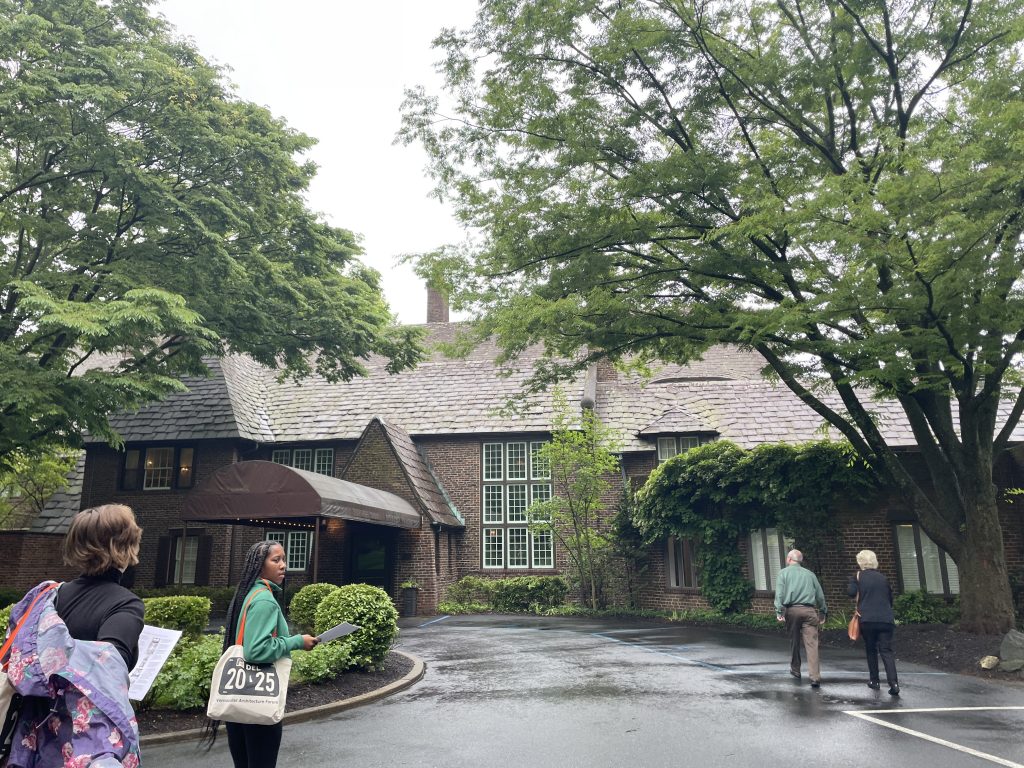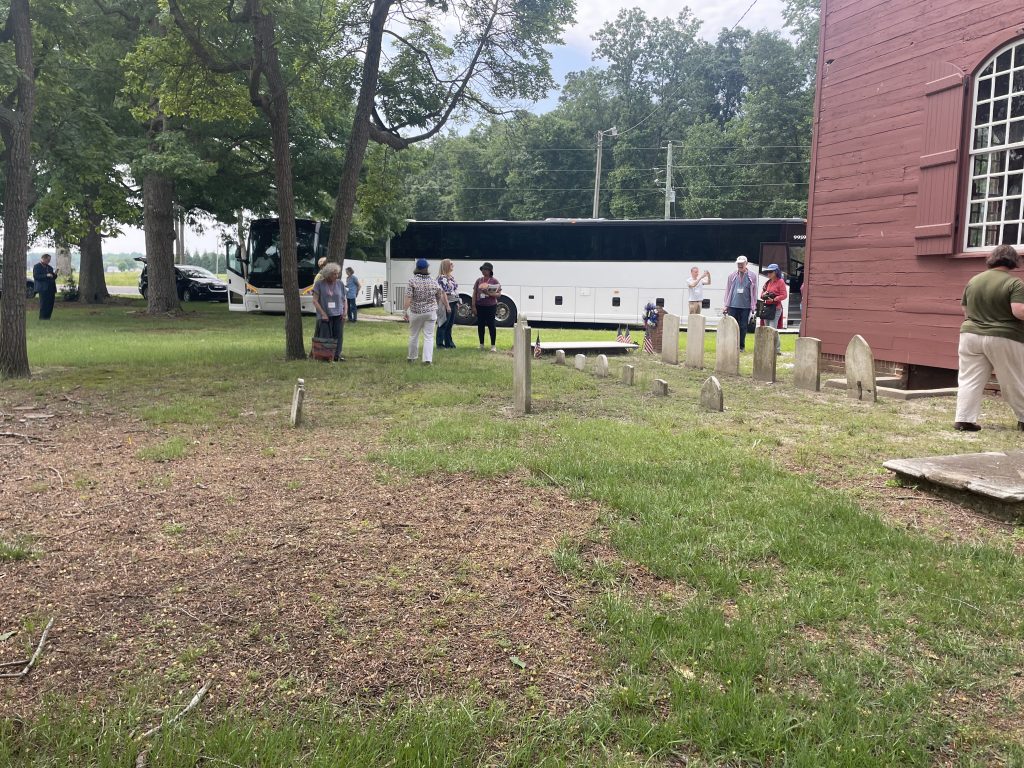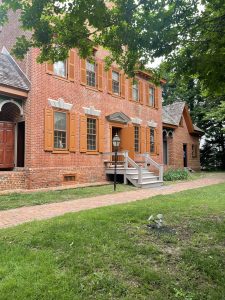Vernacular Architecture Forum visits historic Delaware sites
Architecture professionals visit New Castle Court House, John Dickinson Plantation

This spring, for the first time since 1984, the Vernacular Architecture Forum hosted its annual conference in Delaware, bringing hundreds of experts and enthusiasts to First State historic sites.
The Vernacular Architecture Forum is a national organization focused on the study of ordinary buildings and landscapes. This year’s conference was based in Wilmington, with tours crossing the entire state. Attendees learned about historic properties from the 17th through 20th centuries and tour stops included historic churches, private homes and properties owned and managed by local nonprofits.
Staff from the Division of Historical and Cultural Affairs assisted in preparations for the conference and hosted tours at the John Dickinson Plantation and the New Castle Court House Museum.
“It was wonderful to share the history of the Court House with this group that was very interested in its history,” said Site Supervisor Juliette Wurm. “It also allowed us to view the Court House’s history through a different lens that we don’t get to talk about every day.” Conference attendees pointed out details of the Court House’s construction that many other visitors miss.

The University of Delaware’s Center for Historic Architecture and Design program was one of the conference’s primary sponsors, compiling much of the information for the tours and organizing events. Conference co-chair and the university program’s Assistant Director Catherine Morrissey spoke of the importance of Delaware hosting the event.
“Bringing a national organization like the Vernacular Architecture Forum to Delaware this year was a big deal,” she said. “It not only showcased our architecture and landscapes to an audience of scholars and professionals from all over the country, but it also highlighted the important work the University of Delaware’s CHAD has been doing for decades to help document and preserve these historic places and stories.”

Staff from the State Historic Preservation Office also assisted with preparing drawings and write-ups for buildings featured on the tours, and attended the conference as well. Emily Whaley, an architectural historian who serves as the state’s coordinator for the National Register of Historic Places, said her favorite part about the conference was witnessing architectural historians, students, and others share excitement over interesting building trends and architectural features discovered while studying the built environment.
Nearly 240 people from across the country and abroad attended the four-day event, providing an opportunity to highlight the rich history of Delaware and its diverse architecture. The conference provided an opportunity for Delawareans engaged in every facet of preservation to come together in an effort to share historically significant places from across the state. Morrissey summarized it well by reporting her “favorite part of the conference was probably working with so many partners across Delaware to make it happen — from historic homeowners, to site administrators, to many sponsors and partner organizations.”


